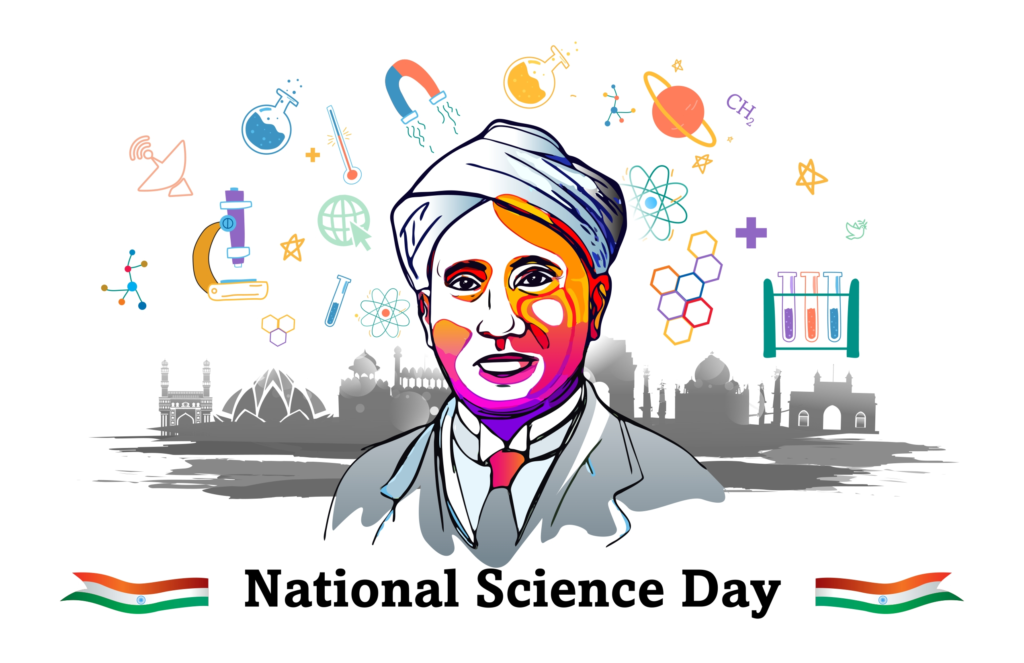
Table of Contents
- Introduction: A Day that Changed Indian Science Forever
- Why February 28? The Story Behind the Date
- Who was C.V. Raman? The Legend Behind the Day
- The Purpose of National Science Day
- Celebrating Science: Events Across India
- Science and You: Why It Matters Today
- Fostering a Scientific Spirit in the Next Generation
- Conclusion: More Than a Day – A Movement
Introduction: A Day that Changed Indian Science Forever
Every year on February 28, India pauses to celebrate something extraordinary — the spirit of curiosity, innovation, and discovery. National Science Day isn’t just a day on the calendar. It’s a celebration of the bold thinkers and curious minds who shape the future through science. It’s about honoring not just the past, but the possibilities of tomorrow.
Why February 28? The Story Behind the Date
The significance of this date lies in a scientific breakthrough. On February 28, 1928, Indian physicist Sir C.V. Raman announced his discovery of the Raman Effect — a phenomenon that earned him the Nobel Prize in Physics in 1930. His discovery opened new doors in light scattering and molecular physics, putting Indian science on the global map.
Who was C.V. Raman? The Legend Behind the Day
Sir Chandrasekhara Venkata Raman was not just a scientist — he was a visionary. Working with simple instruments in an Indian lab, Raman dared to explore the unexplained. His work proved that groundbreaking science doesn’t always need high-tech labs — just a sharp mind and relentless curiosity.
His journey inspires every student and researcher to ask questions, experiment fearlessly, and believe in the power of knowledge.
The Purpose of National Science Day
Declared by the Government of India in 1986, National Science Day has a deeper purpose:
- To spread awareness about the importance of science in everyday life.
- To recognize Indian contributions to global scientific advancement.
- To encourage young minds to pursue careers in science and research.
- To highlight innovations that are solving real-world problems.
Every year, the day is celebrated with a central theme. Past themes have focused on everything from clean energy to women in science.
Celebrating Science: Events Across India
From classrooms to research labs, the celebration is vibrant and widespread:
- Science exhibitions in schools and colleges
- Lectures and seminars by top scientists
- Quiz competitions, science fairs, and innovation contests
- Open days at scientific institutions like ISRO, CSIR, and IITs
These events don’t just entertain — they ignite a spark. They make science approachable and fun, not just theoretical and distant.
Science and You: Why It Matters Today
In an age of climate change, pandemics, and digital revolutions, science is not optional — it’s essential. National Science Day reminds us that:
- Vaccines, clean water, and space exploration exist because of scientific progress.
- Our daily lives — from smartphones to sustainable agriculture — are shaped by innovation.
- Every challenge we face today will be solved by the thinkers and inventors of tomorrow.
Fostering a Scientific Spirit in the Next Generation
This day is also a call to action — for educators, parents, and policymakers. We must create an environment where children are free to ask “why?”, to dismantle gadgets, to explore nature, to read, to question, and to wonder.
Let’s build classrooms and communities that don’t just teach science, but nurture curiosity.
Conclusion: More Than a Day – A Movement
National Science Day is more than a date in history. It’s a movement to celebrate thinkers, questioners, inventors, and everyday problem-solvers. It reminds us that science is not confined to labs — it’s in our kitchens, classrooms, phones, and futures.

